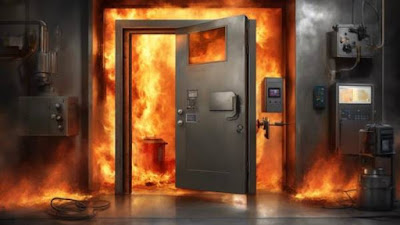A Comprehensive Guide from Leading Manufacturers
Fire Doors in Residential Settings
Even in the everyday apartment block or the ordinary row house, a well-rated fire door can mean the difference between an unsettling scare and a serious disaster. In many mid-rise condos, such doors guard the threshold of each unit, seal off busy hallways, and protect narrow staircases, all while pinning the flames to one floor. In the classic single-family bungalow, the heavy slab might slide into the opening between the garage and the mud room, or wedge itself across a cluttered utility closet where old paint cans quietly wait. Beyond far-fetched what-ifs, most local building codes now count these doors toward the checklist and, by extension, so do the relieved hearts of tenants and weary landlords.
What Standards and Codes Govern Fire Doors?
Understanding Fire Door Compliance Codes
Compliance codes for fire doors exist to create an equal baseline of safety across homes, offices, factories, and public spaces alike. The rules are intended to ensure that any door labeled fire-rated does indeed slow the horizontal march of flames and the near-invisible drift of smoke when panic strikes. National Fire Protection Association documents, such as NFPA 80, spell out every detail from frame material to monthly checks, so no part of a door’s life is left to guesswork. Alongside those national mandates, the International Code Council and local permit offices insert their own tweaks, making the final checklist a patchwork but necessary bulwark against disaster.
How Codes Impact Design and Manufacturing
Fire-safety regulations exert a powerful shaping force on door design and factory assembly. Each clause in a given code coaxes engineers to rethink materials, geometry, and finishing touches long before the first prototype is hung in a lab. Testing protocols such as ASTM E152 or UL 10C hurl flame and heat at full-scale specimens, demanding that hinges, cores, and skins endure without buckling or leaking beyond strict time limits. Beyond survival in a furnace, a finished door must still swing freely for the person caught on the opposite side when the alarm sounds. That practical need nudges designers toward self-closers, tight smoke seals, and readable markings that survive both panic and plate-glass lawsuits. In brief, codes blend numeric rigor with everyday usability, turning a simple slab of wood or steel into a certified barrier against fire.
















![[dok. Humas PT PP Properti Tbk]](https://infoaceh.net/wp-content/uploads/2025/06/679334e941763-fasilitas-lengkap-pp-properti-hadirkan-hunian-student-residence-di-margonda-depok_665-250x144.jpeg)





















